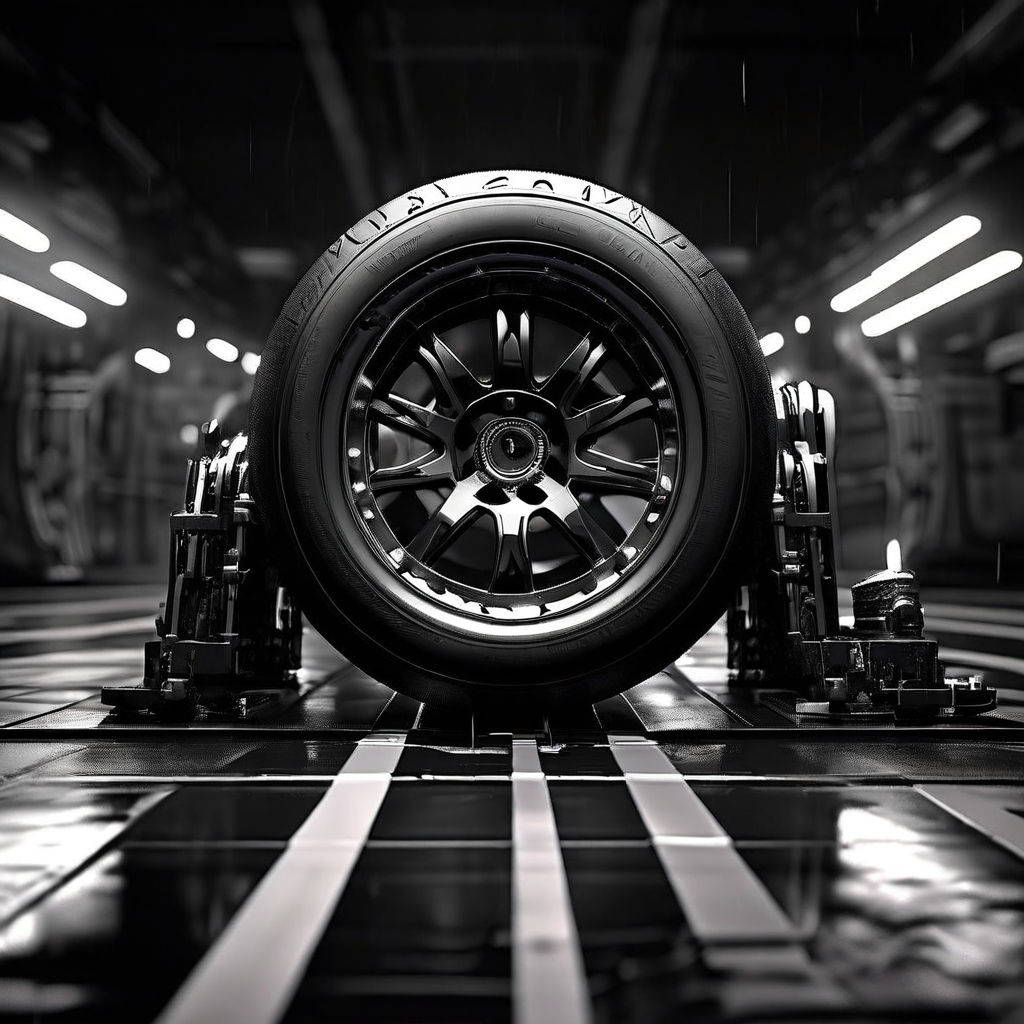
Wheel alignment is a crucial aspect of vehicle maintenance that ensures your car drives straight and true. Poor alignment can lead to uneven tire wear, poor handling, and decreased fuel efficiency. Performing wheel alignment might seem daunting, but with the right tools and some patience, you can do it yourself. Here’s a comprehensive guide on how to perform wheel alignment.
Understanding Wheel Alignment
Wheel alignment involves adjusting the angles of the wheels so that they are set to the car manufacturer’s specifications. The main alignment parameters are:
- Toe: The angle of the wheels pointing inward or outward when viewed from above.
- Camber: The angle of the wheels tilting inward or outward when viewed from the front.
- Caster: The angle of the steering axis when viewed from the side of the vehicle.
Tools You’ll Need
- Wheel alignment gauge or camber gauge
- Wrenches and socket set
- Jack and jack stands
- Measuring tape
- String or fishing line
- Pen and paper for notes
- Owner’s manual for specifications
Steps to Perform Wheel Alignment
- PreparationPark on a Level Surface: Ensure your car is on a level surface and the tires are properly inflated.Check Suspension: Inspect your suspension components (ball joints, tie rods, etc.) for wear and replace any damaged parts.
- Park on a Level Surface: Ensure your car is on a level surface and the tires are properly inflated.
- Check Suspension: Inspect your suspension components (ball joints, tie rods, etc.) for wear and replace any damaged parts.
- Measure the Toe AngleSet Up Strings: Place jack stands in front and behind the car, and run a string along the length of the car at axle height. The strings should be parallel to each other and equidistant from the center of the car.Measure Distance: Measure the distance from the string to the front and back of the front tire. Repeat for the rear tires.Adjust Toe: Adjust the tie rods to change the toe angle. Turning the tie rod adjusters will move the front of the tire in or out.
- Set Up Strings: Place jack stands in front and behind the car, and run a string along the length of the car at axle height. The strings should be parallel to each other and equidistant from the center of the car.
- Measure Distance: Measure the distance from the string to the front and back of the front tire. Repeat for the rear tires.
- Adjust Toe: Adjust the tie rods to change the toe angle. Turning the tie rod adjusters will move the front of the tire in or out.
- Measure the Camber AngleUse a Camber Gauge: Attach the camber gauge to the wheel hub.Read the Angle: Check the reading on the camber gauge and compare it to the manufacturer’s specifications.Adjust Camber: Adjust the camber by loosening the bolts on the strut mount and moving the top of the wheel in or out as needed. Tighten the bolts once the desired angle is achieved.
- Use a Camber Gauge: Attach the camber gauge to the wheel hub.
- Read the Angle: Check the reading on the camber gauge and compare it to the manufacturer’s specifications.
- Adjust Camber: Adjust the camber by loosening the bolts on the strut mount and moving the top of the wheel in or out as needed. Tighten the bolts once the desired angle is achieved.
- Check and Adjust Caster AngleCaster Measurement: Caster is more difficult to measure at home without specialized tools. It’s usually best left to professionals, but basic adjustments can be made by moving the strut mounts forward or backward if your vehicle allows for it.Test Drive: After making adjustments, take the car for a test drive to ensure it drives straight and responds well to steering inputs.
- Caster Measurement: Caster is more difficult to measure at home without specialized tools. It’s usually best left to professionals, but basic adjustments can be made by moving the strut mounts forward or backward if your vehicle allows for it.
- Test Drive: After making adjustments, take the car for a test drive to ensure it drives straight and responds well to steering inputs.
- Recheck All MeasurementsFinal Check: Recheck the toe, camber, and caster angles after the test drive to ensure everything is within specifications.Make Further Adjustments: If necessary, make further adjustments and recheck until everything is correctly aligned.
- Final Check: Recheck the toe, camber, and caster angles after the test drive to ensure everything is within specifications.
- Make Further Adjustments: If necessary, make further adjustments and recheck until everything is correctly aligned.
Tips for Successful Wheel Alignment
- Be Patient: Wheel alignment can be a tedious process. Take your time to ensure accurate measurements.
- Use Quality Tools: Invest in a good alignment gauge or have the work done by a professional if you’re not confident in doing it yourself.
- Regular Maintenance: Regularly check your alignment and tire condition to avoid uneven wear and potential handling issues.

